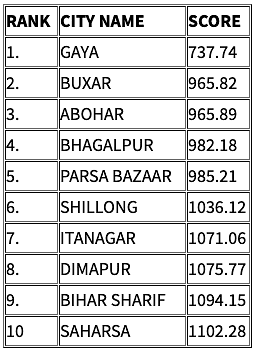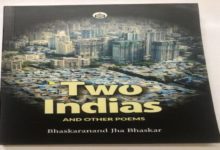In the recent report from the Swachh Survekshan 2020, Northeast Indian cities have been ranked poorly. Shillong (Meghalaya), Itanagar (Arunachal Pradesh) and Dimapur (Nagaland) have featured in the top 10 dirtiest cities of the country, reports Pushkar, exclusively for Different Truths.
In the recent report from the Swachh Survekshan 2020, Northeast Indian cities have been ranked poorly. The fifth edition of top 10 cleanliness and dirtiest city, a survey of the country carried out by the Quality Council of India, Central Government. Three cities from the region — Shillong (Meghalaya), Itanagar (Arunachal Pradesh) and Dimapur (Nagaland) have featured in the top 10 dirtiest cities of the country. All these cities fall under the category of population below 10 lakh.
Here’s the list of country’s dirtiest cities, who have a population of less than 10 lakh: 1. Gaya 2. Buxar 3. Abohar 4. Bhagalpur 5. Parsa Bazaar 6. Shillong 7. Itanagar 8. Dimapur 9. Bihar Sharif 10. Saharsa
Here’s the list of country’s dirtiest cities, who have a population of less than 10 lakh: 1. Gaya 2. Buxar 3. Abohar 4. Bhagalpur 5. Parsa Bazaar 6. Shillong 7. Itanagar 8. Dimapur 9. Bihar Sharif 10. Saharsa.
The survey was done based on collection segregated waste and maintenance till processing site, treatment and reuse of wastewater, curtailing substantial waste-based air pollution, among other factors. Indore ( Madhya Pradesh) retained its 1st position as the cleanest city in India for the fourth consecutive year followed by Surat and Navi Mumbai won the second and third position respectively. In Northeast Indian city, Gangtok was ranked highest in terms of cleanliness by scoring 319th rank in the Swachh Survekshan 2020.

Mokokchung(Nagaland) was awarded as the Cleanest City in North East India under the Population of 25 to 50 Thousand Catagory. Jorhat (Assam) was awarded as 1st place in the “Cleanest City” (Population between 50k-100k) in theNorth-East Zone.
Mokokchung(Nagaland) was awarded as the Cleanest City in North East India under the Population of 25 to 50 Thousand Catagory. Jorhat (Assam) was awarded as 1st place in the “Cleanest City” (Population between 50k-100k) in theNorth-East Zone.
Hardeep S Puri, Ministry of Housing and Urban Affairs has stated that “Swachh Survekshan will continue to help us in sustaining the gains made under Swachh Bharat Mission-Urban (SBM-U) while providing a comprehensive roadmap to institutionalise the concept of total Swachhata among all our cities. As the performance of cities rightly show, we are well on our way to creating not just a ‘Swachh’ (clean) but a ‘Swasth’ (healthy), ‘Sashakt’ (empowered), ‘Sampann’
(prosperous) and Atmanirbhar (self-reliant) New India!”
Photos sourced by the author.





 By
By

